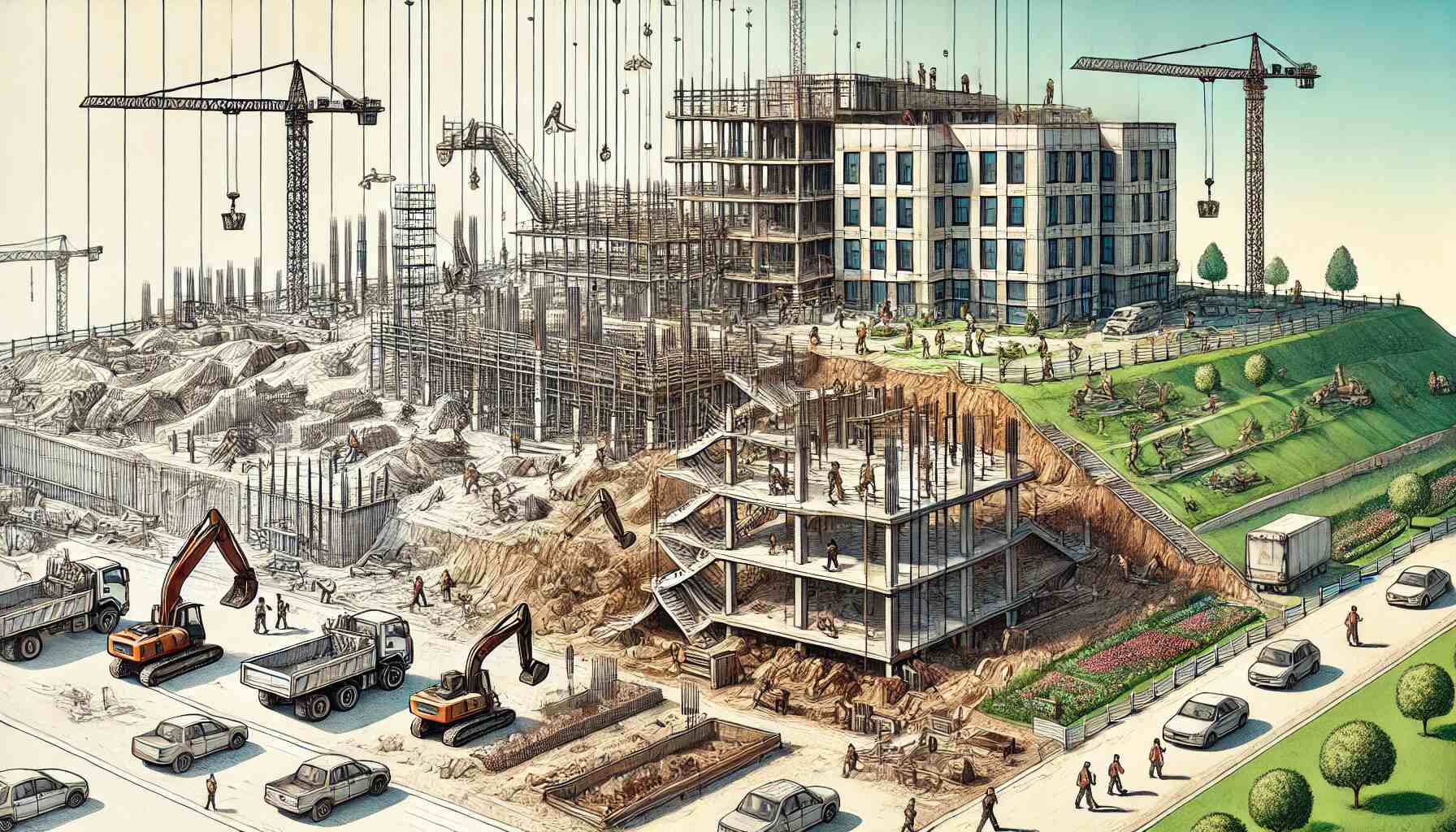Construction projects, whether residential or commercial, require meticulous planning and execution. From laying the foundation to the final touches, each phase plays a crucial role in ensuring the structure’s stability, functionality, and aesthetics. This article provides a comprehensive overview of the construction process, highlighting key stages and essential considerations for a successful build. Comprehensive Construction Insights
1. Planning and Design
Before breaking ground, thorough planning and design are paramount. This phase involves:
- Needs Assessment: Understanding the client’s requirements and objectives.
- Site Analysis: Evaluating the land’s condition, zoning laws, and environmental factors.
- Blueprint Development: Creating detailed architectural and engineering plans.
- Budgeting and Scheduling: Estimating costs and setting a realistic timeline.
Effective planning sets the stage for a smooth construction process, minimizing delays and cost overruns.
2. Site Preparation and Foundation
With plans in hand, site preparation marks the project’s official start. This phase includes:
- Clearing and Excavation: Removing vegetation, rocks, and debris, followed by digging to the required depth.
- Grading and Leveling: Ensuring the site is level and stable for foundation work.
- Foundation Construction: Pouring concrete footings and slabs or laying block foundations, depending on the project specifications.
A solid foundation is critical for the building’s structural integrity, providing a stable base to support the entire structure.
3. Framing and Structural Work
Once the foundation is set, framing begins. This stage shapes the building’s skeleton and involves:
- Erecting Walls and Roofs: Using wood, steel, or concrete to construct walls, floors, and roofs.
- Installing Windows and Doors: Placing openings to allow natural light and accessibility.
- Electrical and Plumbing Rough-In: Laying the groundwork for essential utilities within the walls and floors.
Framing defines the building’s shape and ensures it can withstand external forces like wind and seismic activity.
4. Exterior and Interior Finishing
With the structure in place, attention turns to both exterior and interior finishes:
- Exterior Work: Installing siding, roofing materials, and exterior trim to protect the building from the elements.
- Insulation and Drywall: Adding insulation for thermal efficiency and covering walls with drywall.
- Flooring and Painting: Laying down flooring materials and painting walls to enhance aesthetics.
- Installing Fixtures: Adding cabinetry, lighting, plumbing fixtures, and other essential elements.
These finishing touches not only beautify the building but also make it functional and comfortable for occupants.
5. Quality Control and Final Inspections
As construction nears completion, quality control and inspections ensure everything meets the required standards:
- Conducting Inspections: Checking structural integrity, safety features, and code compliance.
- Performing Quality Control Tests: Ensuring materials and workmanship meet specified criteria.
- Addressing Punch List Items: Fixing minor issues identified during the final walk-through.
Thorough inspections and quality control measures guarantee the building is safe, functional, and ready for occupancy.
6. Project Handover and Maintenance
The final phase involves handing over the completed project to the client and setting up a maintenance plan:
- Client Walk-Through: Providing a tour to explain features and systems.
- Documentation and Training: Supplying manuals, warranties, and training on maintenance procedures.
- Setting Up Maintenance Schedules: Planning regular upkeep to prolong the building’s lifespan.
Proper handover and maintenance ensure the building remains in excellent condition long after construction ends.
Conclusion
Construction is a complex, multi-phase process requiring careful coordination and expertise. From the initial planning stages to the final touches, each step is vital to achieving a successful build. By understanding and executing each phase meticulously, construction professionals can deliver safe, functional, and aesthetically pleasing structures that stand the test of time. Comprehensive Construction Insights

